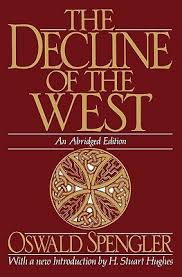In 1998 Bill Clinton stated:
Today, largely because of immigration, there is no majority race in Hawaii or Houston or New York City. Within five years, there will be no majority race in our largest state, California. In a little more than 50 years, there will be no majority race in the United States. No other nation in history has gone through demographic change of this magnitude in so short a time … [These immigrants] are energizing our culture and broadening our vision of the world. They are renewing our most basic values and reminding us all of what it truly means to be American.
The year 2050, or whatever date you want, is when “whites” will become a “minority.” Both words are in quotes, since what counts as “white” and “minority” matter a great deal in terms of these quantities. Clinton, like many liberal(ish) white Americans, did not look upon that future with dread or anxiety. Rather, he was, and presumably is, hopeful. At the time many people asserted that Bill Clinton was arguably the first American president who was personally comfortable with nonwhites. After all, Vernon Jordan was one of his closest friends.
And yet here are the demographics of the town where Bill & Hillary chose to settle down after the 1990s:
. The racial makeup of the CDP was 91.80% White, 0.94% African American, 0.03% Native American, 5.62% Asian, 0.02% Pacific Islander, 0.52% from other races, and 1.07% from two or more races. Hispanic or Latino of any race were 2.55% of the population.
 Bill may look forward to our bright diverse future of 2050, but he lives socially and demographically in 1950. And he’s not alone.
Bill may look forward to our bright diverse future of 2050, but he lives socially and demographically in 1950. And he’s not alone.
To me, this is the important lacunae left out in Panjak Mishra’s op-ed in The New York Times, The Religion of Whiteness Becomes a Suicide Cult. The op-ed is a testament to the fact that even a sophist must speak the truth now and then. It is certainly true that there is a discomfort and disquiet in the world as the long centuries of white supremacy, in the most literal and descriptive sense, slowly come to a close. Naturally, Mishra points the finger at figures from the past, who can’t dispute his disdain, as well as those individuals such as Donald Trump, whom the readers of The New York Times see as heralds of reaction and regression.
 But the truth is that as the “the rising tide of color against white world-supremacy” begins to crest even the “good whites,” the “progressive whites,” will begin to become uncomfortable and unmoored. The noblesse oblige of progressive whites is predicated on the reality and fact of their privilege, of their dominion over the colored races. And yet the reality is that many of these progressive whites show revealed preferences which are not much different than non-progressive whites. On the whole, they live amongst other whites, socialize with other whites, and marry other whites.
But the truth is that as the “the rising tide of color against white world-supremacy” begins to crest even the “good whites,” the “progressive whites,” will begin to become uncomfortable and unmoored. The noblesse oblige of progressive whites is predicated on the reality and fact of their privilege, of their dominion over the colored races. And yet the reality is that many of these progressive whites show revealed preferences which are not much different than non-progressive whites. On the whole, they live amongst other whites, socialize with other whites, and marry other whites.
Having lived in California, around white people who are politically far more liberal than I am, I have a bit of personal experience with how these “revealed preferences” work. Rather than anecdotes, I’ll just point to this article, Ghosts of white people past: witnessing the white flight from an Asian ethnoburb.
The “passing of the great race” is a far bigger story than nationalism, racial or otherwise. It is the expiration of a whole Weltanschauung. An undermining of assumptions. The death of a world civilization, and the birth of a new one.